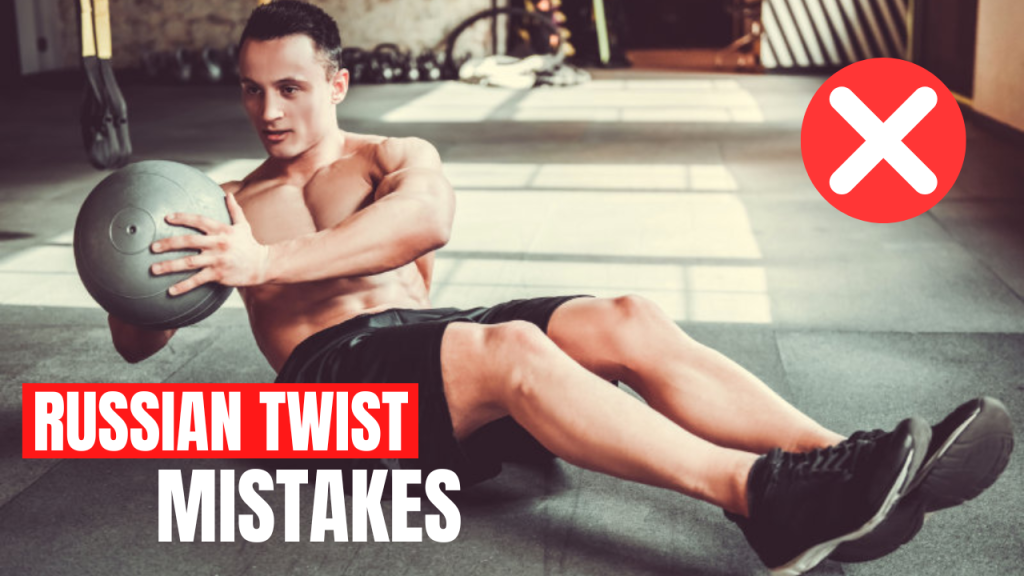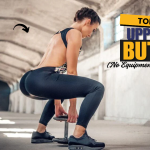The Russian twist is a powerful exercise for sculpting your obliques and strengthening your core, but if you’re making common mistakes, you could be missing out on the full benefits—or worse, setting yourself up for injury. Whether you’re a beginner or a seasoned gym-goer, avoiding these errors will ensure you get the most out of every twist. Let’s break down the mistakes and how to fix them for maximum gains.

1. Relying Too Much on Your Arms Instead of Your Core
The Mistake: Many people use their arms to twist rather than engaging their core muscles. This not only reduces the effectiveness of the exercise but also increases the risk of straining your shoulders.
The Fix: Keep your arms locked in a steady position and focus on rotating from your torso. Imagine your ribcage leading the movement instead of your hands.
2. Rounding Your Back
The Mistake: A rounded back puts unnecessary strain on your spine, which can lead to lower back pain.
The Fix: Keep your chest lifted and maintain a straight spine throughout the movement. Engage your core muscles to support your back and prevent slouching.
3. Twisting Too Fast Without Control
The Mistake: Many people rush through the movement, swinging their arms from side to side without proper control.
The Fix: Slow it down! Focus on a controlled, deliberate twist. The slower you go, the more your muscles work, leading to better results.
4. Feet Touching the Ground (When They Shouldn’t Be)
The Mistake: If your feet are on the ground when they should be lifted, you’re reducing the intensity of the exercise.
The Fix: For an advanced Russian twist, keep your feet slightly elevated. If you’re a beginner, you can keep them down, but as you progress, lift them to increase the challenge.
5. Using Too Much Weight Too Soon
The Mistake: Adding a heavy weight before mastering the form can strain your back and lead to poor technique.
The Fix: Start with bodyweight twists. Once you perfect your form, gradually add a light weight, such as a medicine ball or dumbbell, before progressing to heavier loads.
6. Not Engaging the Core Properly
The Mistake: If your core isn’t fully engaged, you’re missing the main benefit of the Russian twist.
The Fix: Before twisting, take a deep breath and brace your core. Keep your abdominal muscles tight throughout the movement to ensure maximum activation.
7. Neglecting Your Breathing
The Mistake: Holding your breath or breathing irregularly can make the exercise more difficult and less effective.
The Fix: Breathe out as you twist and inhale as you return to the center. This keeps oxygen flowing and improves endurance.
8. Doing Too Many Reps Without Proper Form
The Mistake: High reps with poor form can do more harm than good.
The Fix: Prioritize quality over quantity. Aim for 10–20 controlled reps with perfect form rather than rushing through 50 sloppy ones.
9. Skipping a Proper Warm-Up
The Mistake: Jumping straight into Russian twists without warming up can increase injury risk.
The Fix: Perform light cardio and dynamic stretches before your workout. Warming up your core and back muscles will improve performance and reduce strain.
10. Ignoring Lower Body Stability
The Mistake: If your legs move excessively, you’re not stabilizing your lower body correctly.
The Fix: Keep your lower body steady by engaging your hip flexors and thighs. Your torso should do the twisting while your legs remain in place.
Bonus Tip: Modify for Your Fitness Level
Not everyone needs to perform Russian twists the same way. Beginners can keep their feet on the ground and go weight-free, while advanced trainees can elevate their feet and add resistance.
Final Thoughts
Russian twists are an incredible way to build core strength and define your obliques, but only if done correctly. By avoiding these mistakes and focusing on proper form, you’ll maximize your gains while reducing injury risk. Keep these tips in mind, and your core workouts will be more effective than ever!
Now it’s your turn! Have you been making any of these mistakes? Let us know in the comments, and don’t forget to share this with your workout buddies.
Frequently Asked Questions (FAQs)
How many Russian twists should I do per session?
It depends on your fitness level. Beginners can start with 10-15 reps per side, while advanced individuals can aim for 20-30 reps per side. Focus on quality over quantity.
Should my feet be on the ground or lifted?
Both are correct, depending on your fitness level. Keeping your feet on the ground makes the exercise easier, while lifting them increases core engagement and difficulty.
Can Russian twists help me get abs?
Yes, but only as part of a complete workout and diet plan. Russian twists strengthen your obliques and core, but visible abs require low body fat, which comes from a mix of exercise and proper nutrition.
Is it okay to use weights for Russian twists?
Yes, but only after mastering form. Start with bodyweight twists before adding a light medicine ball or dumbbell, gradually increasing resistance as your core gets stronger.
Why does my lower back hurt during Russian twists?
This usually happens due to poor form—such as rounding your back or twisting too quickly. Keep your spine straight, engage your core, and move with control to avoid strain.
Are Russian twists bad for the spine?
Not if done correctly. However, twisting with poor form or excessive weight can strain your spine. If you have a history of back problems, consult a professional before including them in your routine.





